Not much can quell a chocolate lover’s passion for their candy of choice. However, the surging cost of said candy (thanks to inflation, volatile cocoa prices, and other complicating factors) seems to be nibbling at sales, though only to a modest degree. In the face of these climbing costs, producers are doing what they can to keep on top of what consumers want, and to deliver on their chocolate cravings.
Market data
According to data from Circana (Chicago) for the 52-week period ending June 16, 2024, chocolate sales have been relatively even, but with notable ups and downs in several areas. Overall, chocolate treats brought in $19.5 billion in dollar sales (1.7% higher than the previous year), with unit sales down 5.5%. Chocolate candy (in box, bag, and bar form) offered in packs had a modest dollar sales increase and drop in unit sales, for packs both larger than 3.5 ounce and smaller. However, private label fared relatively better than brand-name entities in many subcategories, possibly signaling consumer interest in saving money while continuing to treat themselves.
The top three dollar-sale leaders in the bigger-than3.5-ounce column include:
- Hershey: $7.6 billion, down 2.5%, with a 7.2% decrease in units
- Mars Wrigley: $2 billion, down 1.3%, and a 5.5% decline in unit sales
- Private label: $578.1 million, up 14.3%, along with a 20.1% increase in units sold
Then, in the smaller-than column:
- Hershey: $5.8 billion, a bump up of 0.3% in dollar sales and drop of 6.7% in units
- Mars Wrigley: $1.9 billion, a rise of 0.7% in sales, and a dip in unit sales of 6.6%
- Ferrero: $345 million, a jump of 1% in sales and a decline of 11.4% in units

Courtesy of Blommer
Various subcategories, as well as individual companies, had movements worth noting (as well as keeping an eye on down the road):
- Relative newcomer Feastables, in the snack-size chocolate candy subcategory, debuted on this year’s list with nearly $4 million in sales
- Overall, sugar-free chocolate candy dropped 4.9% compared to last year (hitting $296.4 million in sales); however, private-label sales—while selling a modest $2 million—jumped by 757.1% compared to the previous year
- Premium-skewed Godiva’s performance in the gift-box chocolates category saw sales drop 37.7% to reach $6.4 million
- Novelty chocolate candy had one of the rare subcategory increases, increasing 11.8% compared to the previous year to hit $2.1 million
Looking back
Confectionery companies (along with any food folks that incorporate chocolate into their wares) continue to be affected by cocoa supply woes. High price tags have caused consumers to rethink their chocolate buys, while producers have been challenged with finding ways to keep candy purchases coming.
“Sales of chocolate have been negatively impacted by the cocoa crop failures in West Africa driving prices to levels never seen before,” relates a team of representatives from Blommer Chocolate Co. “Conversely, we have seen an uptick in compound coating sales as our customers struggle to hit price points required by retailers.”
Blommer has come out with its Elevate line of products, cocoa butter equivalents that reportedly can replace some or all cocoa butter in recipes with reduced cost and no loss of flavor. “With cocoa butter selling for as high as $14 a pound, it has made chocolate unaffordable for many small- and medium-size manufacturers,” Blommer representatives state. “Elevate gives the option to maintain chocolate flavor, mouthfeel, and sensory attributes along with cost savings. If cocoa beans continue to trade above $6000 per metric ton, we are likely to see continued demand destruction due to price concerns.”
Mike Gilroy, vice president of trade development and sponsorship with Mars Wrigley Confectionery, says staying on top of what chocolate cravers want is a must for producers, and an “obsession” at his company.
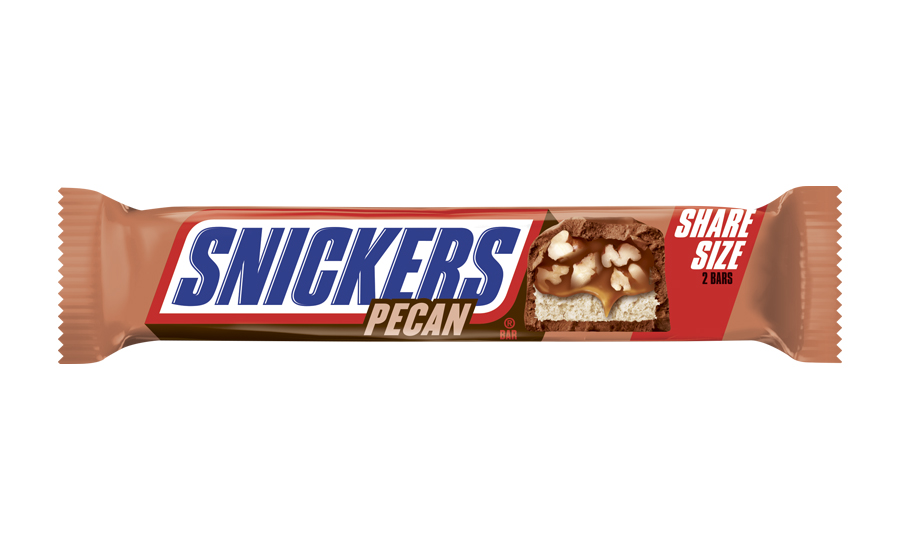
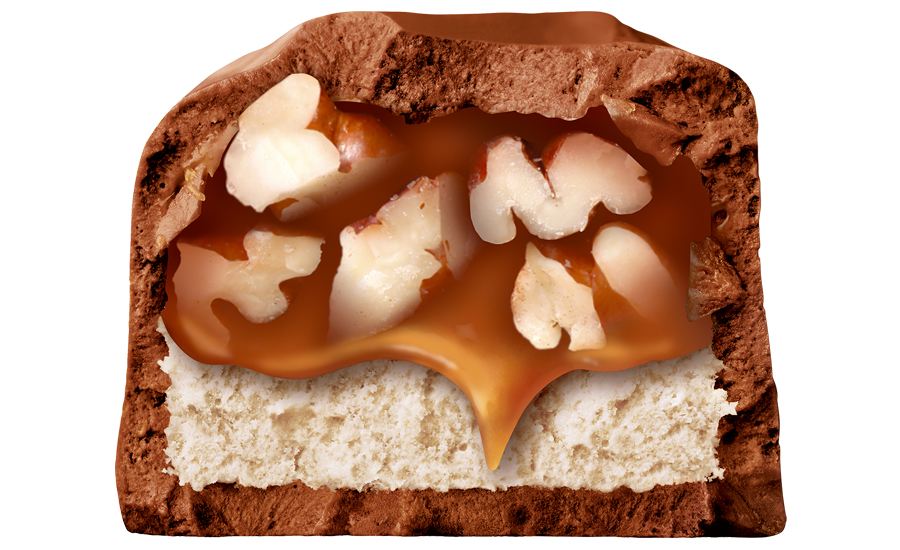
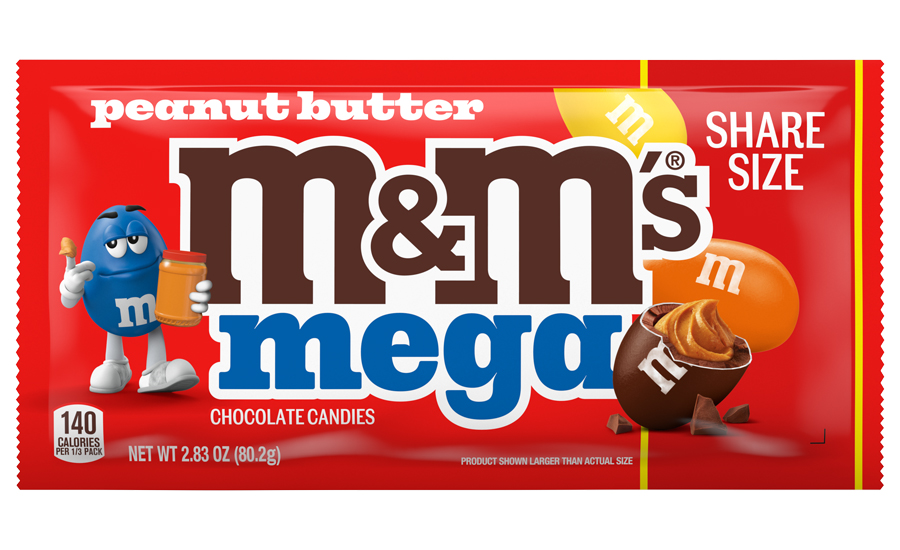
Courtesy of Mars Wrigley
“Treating and snacking trends are changing at warp speed. At Mars, we continue to find innovative new ways to reach consumers, particularly Gen Z,” he states. “From new formats to new textures to bringing a new twist to nostalgia-inducing flavors like peanut butter, we are delivering on consumers’ evolving requests for a wider variety of products.”
Gilroy says Mars has followed through discovering Gen Z’s love for all things peanut butter by coming out with PB products like M&M’S Peanut Butter Minis and M&M’S Peanut Butter Mega.
“When it comes to pairing chocolate with a flavor, peanut butter is the most sought-after flavor by consumers in the category. It’s also the flavor preference of the younger cohort, which is key as we look to engage with our Gen Z fans,” he relates. “With demand for peanut butter continuing to grow, Mars Wrigley is leveraging this consumer appetite for peanut butter by building on our already popular portfolio of products.”
Peter Higgins, president of Choxco, relates that despite challenges, chocolate makers and other candy producers continued to shine creatively.
“Consumers want innovation and new flavors to be able to try new flavor combinations in their moments of indulgence. Bright spots this year were innovations from both large and small brands—keeping formats and flavor fresh for chocolate lovers,” he relates. “Chocxo introduced some of our most successful products over the past 12 months across both everyday and seasonal segments, such as Dark Chocolate Lemon Créme Cups and Dark Chocolate Peppermint Cups.”
While chocolate companies continued to innovate, Higgins shares, consumer preferences continued to evolve.
“Consumers are making choices about what meets their definition of better for you; they want real ingredients, organic and lower sugar, without any compromise on delicious taste,” They are also moving away from sugar alternatives and looking for lower sugar offerings made without sugar alcohols or substitutes.”
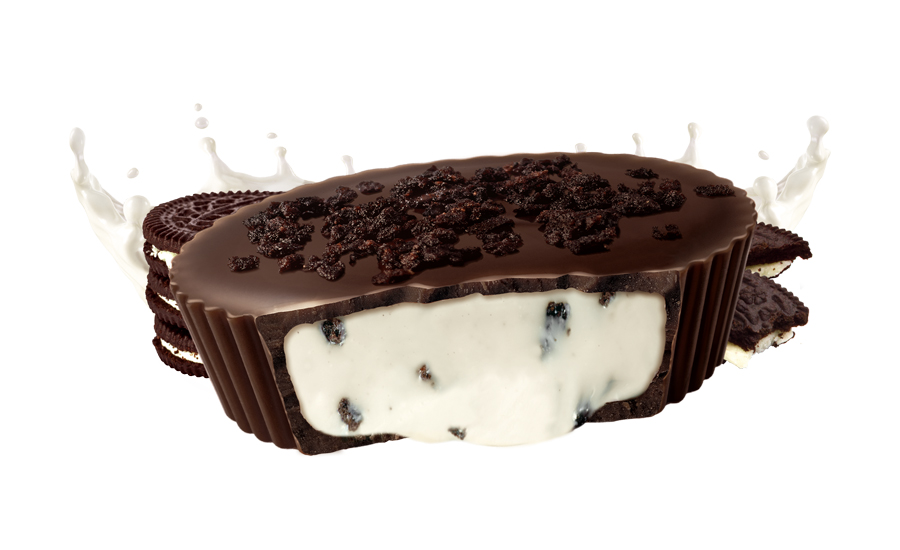
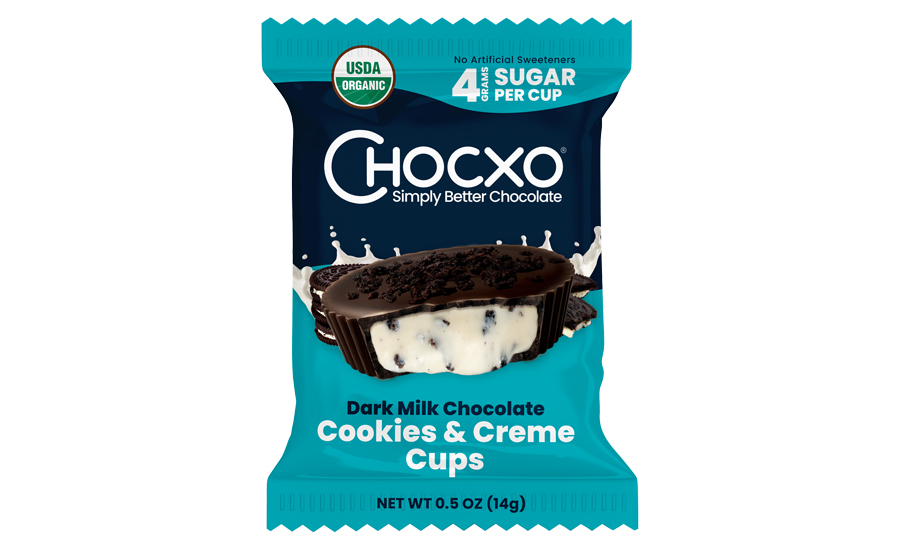
Courtesy of Choxco
As Higgins points out, a significant force in the BFY drive is increased interest in sugar-reduced products. Blommer’s solutions in that area include Discovery. The line of drops and coatings (created in partnership with Incredo) is designed to cut the sugar content of products by as much as 40%, while achieving the clean label and avoiding use of sugar alcohols.
“Many CPG companies have sugar reduction targets in their ESG goals, and we want to help them to achieve these targets,” shares the Blommer team.
Looking forward
Gilroy says holidays, often a time where chocolate purchases see a bump, will continue to be a boon for chocolate candy producers. However, consumers appear to be planning such buys farther in advance than before, so producers may wish to follow suit.
“Across the main seasons—Valentine’s Day, Easter, Halloween, holidays—we’re seeing shopping timeframes extend, with consumers planning and shopping for these occasions well in advance. When it comes to Halloween, our ‘Mars Tricks, Treats and Trends’ report found that consumers plan for Halloween on average 5.2 weeks in advance of the holiday, and Gen Z and Millennials plan even earlier at 6.8 weeks in advance.”
Speaking of planning ahead, Blommer advises chocolate makers and other producers to prepare themselves for the impact of impending regulatory changes.
“For the first time, added sugars will be limited in school meals nationwide, with small changes happening by Fall 2025 and full implementation by Fall 2027, as announced by the USDA earlier this year,” the Bloomer team relates. “While we commend the initiative to improve the health of school children, which is estimated to reach 50 million by the National Center for Education Statistics, the rapid timeline presents a considerable hurdle for food manufacturers and meal providers alike.”
Blommer recently wrapped a market trend analysis of U.S. grocery retailers, foodservice establishments, bakeries, and other providers of goods. According to company representatives, the results gave them pause.
“We immediately see a white space for manufacturers to tap into this opportunity either by reformulating or introducing new products in this category,” they share.
Higgins says several current trends inspiring shoppers’ chocolate purchases will continue to be in play for the coming months.
“Fruit flavors in chocolate looks to be a continuing trend, we saw incredible demand and appeal with our Dark Chocolate Lemon Cup, and see great fruit innovation throughout the category,” he reports, adding, “Nostalgic flavors also have been seeing great success, and Chocxo is excited to introduce the first Dark Milk Chocolate Cookies & Creme Cup soon (they will be hitting retailers across Canada and the USA in the coming months). Multi-texture appears that it will continue to succeed and win with chocolate lovers. Creating products with both creamy and crunchy elements engages the senses and delights consumers.






